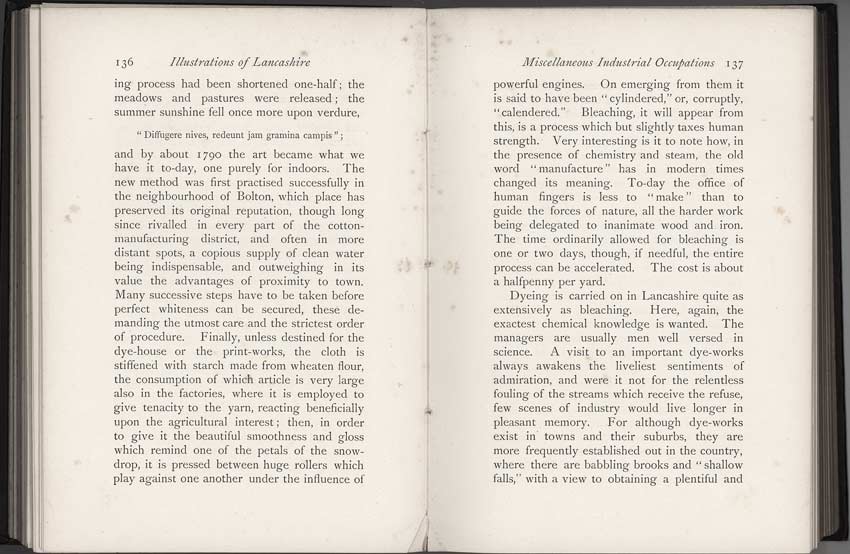
Scan and page transcript from:
LANCASHIRE - Brief Historical and Descriptive Notes
by Leo H. Grindon
Pub. 1892
pages 136-137 |
136 Illustrations of Lancashire ing process had been shortened one-half; the meadows and pastures were released; the summer sunshine fell once more upon verdure,
and by about 1790 the art became what we have it to-day, one purely for indoors. The new method was first practised successfully in the neighbourhood of Bolton, which place has preserved its original reputation, though long since rivalled in every part of the cotton-manufacturing district, and often in more distant spots, a copious supply of clean water being indispensable, and outweighing in its value the advantages of proximity to town. Many successive steps have to be taken before perfect whiteness can be secured, these demanding the utmost care and the strictest order of procedure. Finally, unless destined for the dye-house or the print-works, the cloth. is stiffened with starch made from wheaten flour, the consumption of which article is very large also in the factories, where it is employed to give tenacity to the yarn, reacting beneficially upon the agricultural interest; then, in order to give it the beautiful smoothness and gloss which remind one of the petals of the snow-drop, it is pressed between huge rollers which |
Miscellaneous Industrial Occupations 137 powerful engines. On emerging from them it is said to have been "cylindered," or, corruptly, "calendered." Bleaching, it will appear from this, is a process which but slightly taxes human strength. Very interesting is it to note how, in the presence of chemistry and steam, the old word "manufacture" has in modern times changed its meaning. To-day the office of human fingers is less to "make" than to guide the forces of nature, all the harder work being delegated to inanimate wood and. iron. The time ordinarily allowed for bleaching is one or two days, though, if needful, the entire process can be accelerated. The cost is about a halfpenny per yard. |
